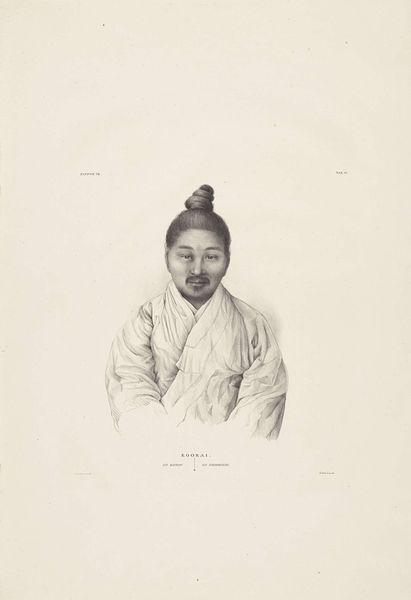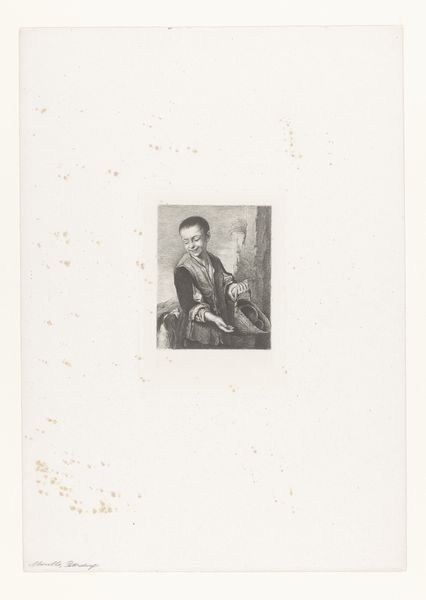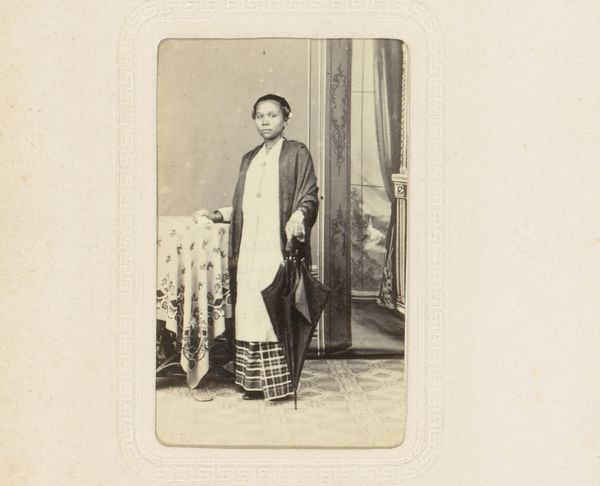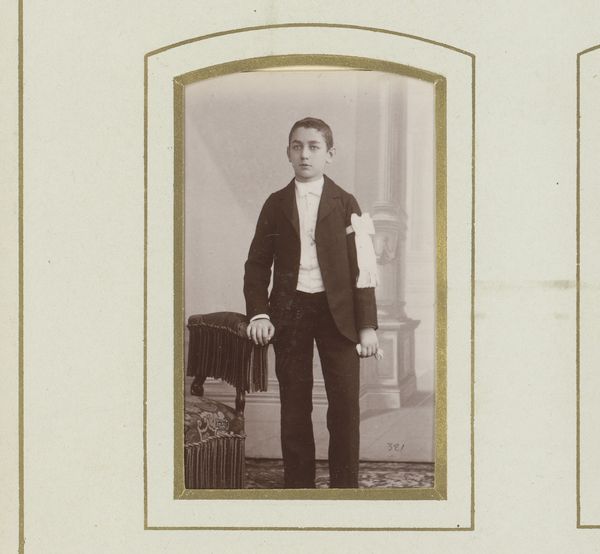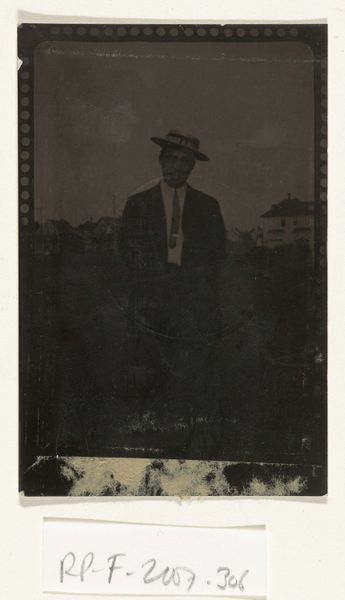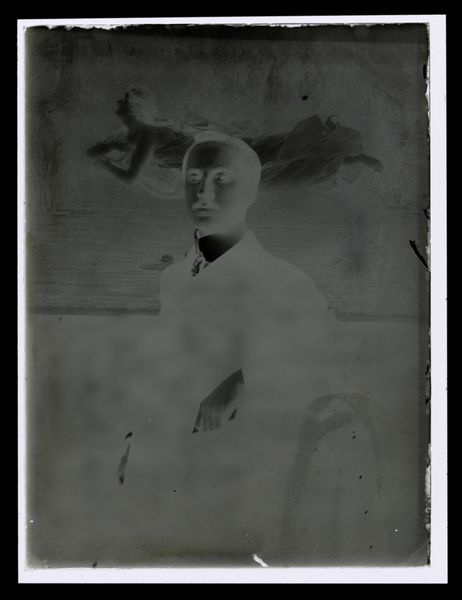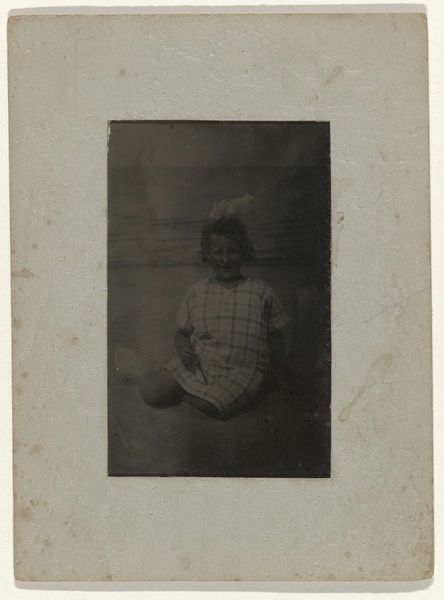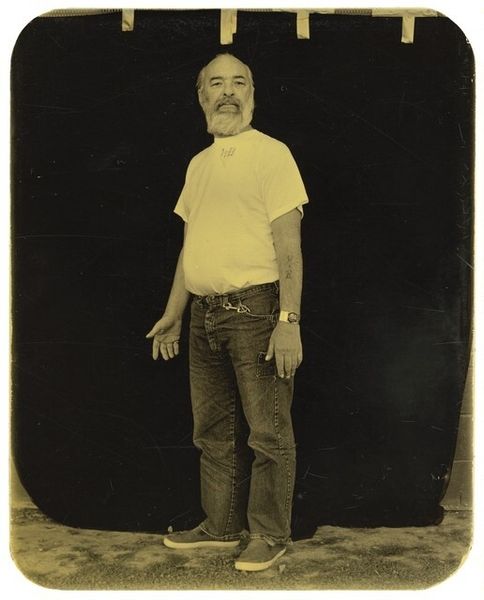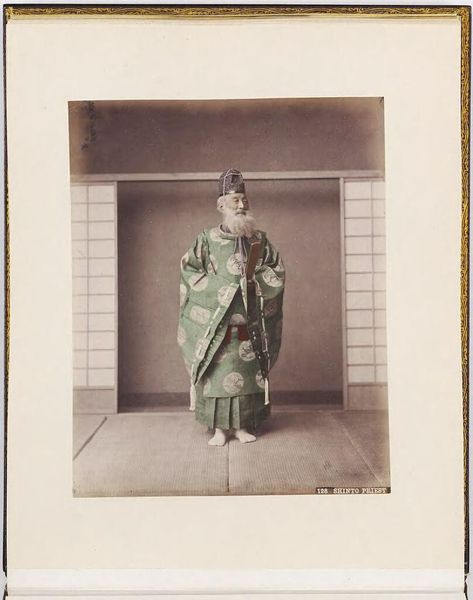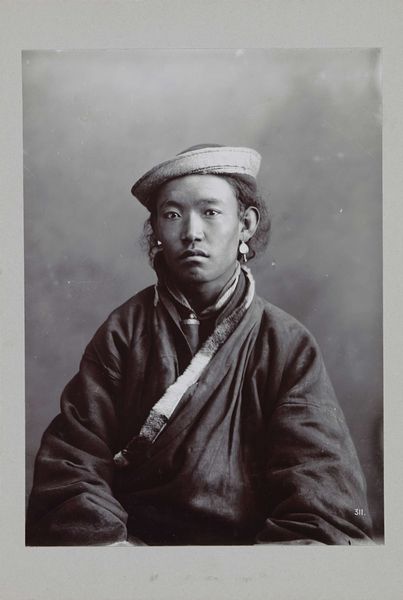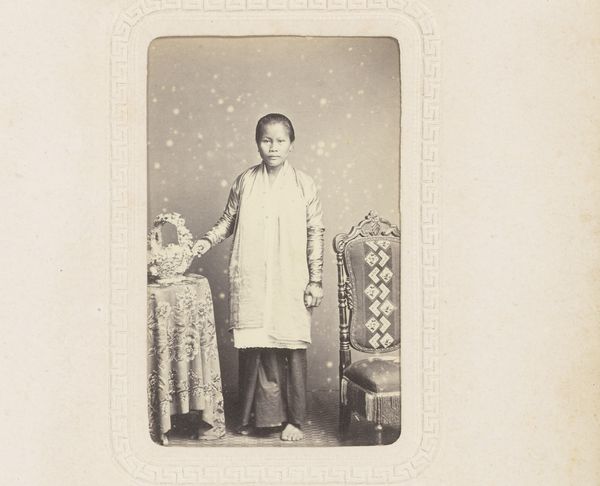
drawing, pencil
#
portrait
#
pencil drawn
#
drawing
#
asian-art
#
charcoal drawing
#
historical photography
#
pencil drawing
#
pencil
Dimensions: height 550 mm, width 390 mm
Copyright: Rijks Museum: Open Domain
Curator: Allow me to introduce you to a compelling pencil drawing, "Portrait of Guo Chengzhang," also known as "Ko Tsching Dschang," created circa 1834. It's currently housed here at the Rijksmuseum. Editor: It strikes me as a particularly intimate portrait. There's a gentleness in the hatching and shading that gives it a subdued and somewhat melancholy affect, almost like a faded photograph. Curator: Interesting observation. From a historical perspective, this work resides in a fascinating intersection. Commissioned during a period of increasing Western engagement with Asia, this portrait serves as an artifact, reflecting the burgeoning global interactions of the era. Editor: Yes, and considering just the form, one notes how the stark contrasts are mitigated by subtle gradations in tone. The artist clearly possesses a confident control over the pencil, establishing volume and depth while maintaining an economy of line. It's almost like a study in values, rendered meticulously. Curator: Precisely. Its aesthetic also bears the hallmarks of cross-cultural exchange. The subject’s garb and features locate him within a specific cultural context. Guo Chengzhang was a member of a Chinese delegation, sent to The Netherlands. This adds layers to our interpretation. Editor: Indeed, considering its composition and graphic handling, it’s difficult to ignore the obvious artistic choices related to idealizing facial features, texture, and chiaroscuro. I keep thinking that if we removed the cultural context, the fundamental principles here still resonate, standing apart as a pure example of formal artistic structure. Curator: True, stripping away context leaves a powerful residue of artistic merit, showcasing not only technique but the evolving global networks that fostered it. In the end, one must always remember the impact art had, especially within the larger tapestry of history. Editor: I would suggest one also needs to value technique and medium as important drivers, both then and now. They often determine the boundaries, and transcend cultural shifts across centuries.
Comments
No comments
Be the first to comment and join the conversation on the ultimate creative platform.
